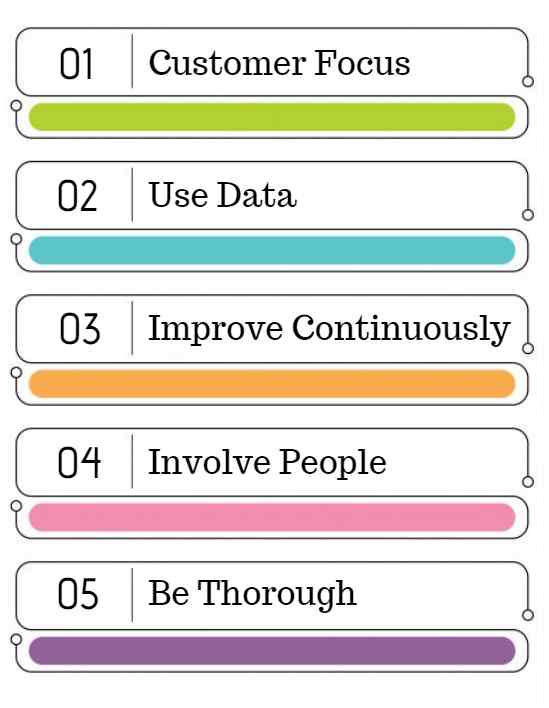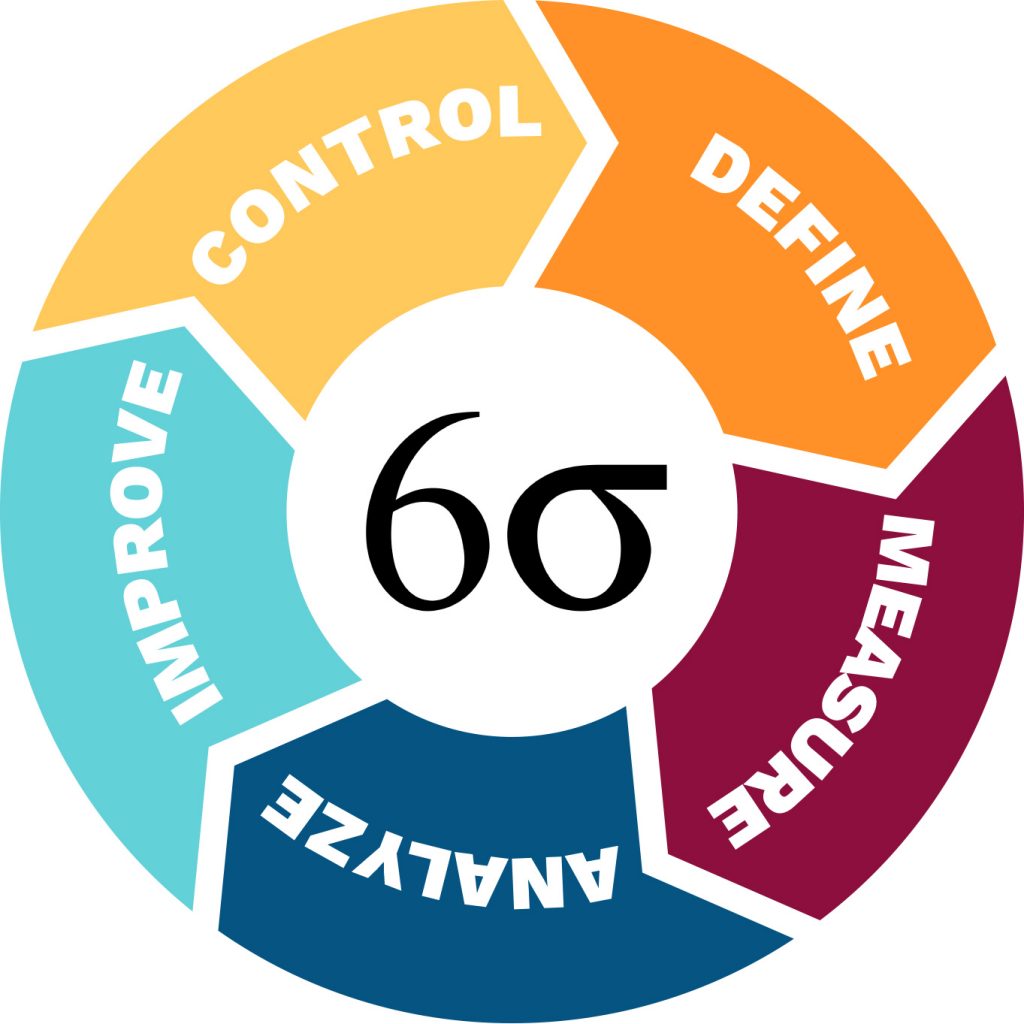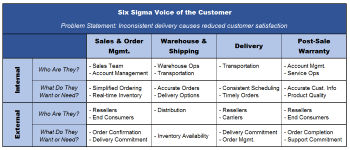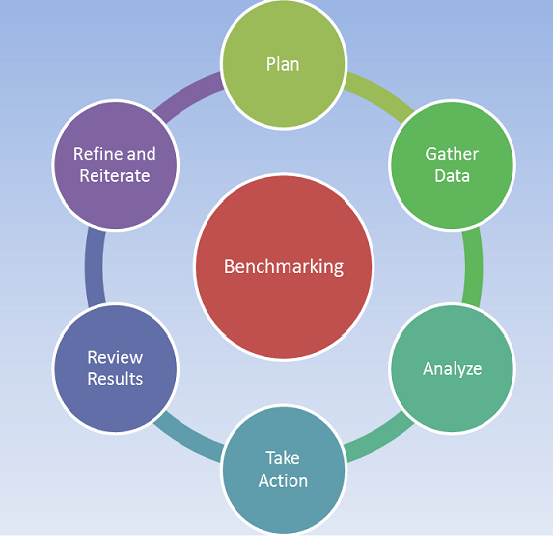Table of Contents
The Changing Agent….
Over the past few decades, the growth in digital trends has phenomenally impacted the functioning of an organisation owing to the emergence of new tools and technologies almost every single day. Innovation and Technology go hand in hand and in the digital world it is just like the icing on the cake. Every individual and every company strive towards achieving magnificent results to fulfil both personal and organisational goals.
To be in the league amongst the giant market corporates within any given industry, it becomes inevitably important for you to identify and troubleshoot the errors, flaws and pin point problem areas that create possible hurdles and obstacles in the growth. Here come’s the concept of Six Sigma.
Upcoming Batches of Six Sigma Green Belt Certificate :-
| Batch | Mode | Price | To Enrol |
|---|---|---|---|
| Starts Every Week | Live Virtual Classroom | 19500 | ENROLL NOW |
What is Six Sigma All About?
Helpful tools and techniques such as Six Sigma have been designed which has enabled the business to take the necessary steps and measures in controlling and managing the quality.
It is important that you get familiar with various aspects of Six Sigma such as:
- Introduction to Six Sigma Key principles of Six Sigma
- The Six Sigma Methodology/Models
- Six Sigma Techniques
- Tools-Six Sigma Tools
- Certification levels
- Benefits of Six Sigma for Individuals and Organisations at large.
Introduction to Six Sigma
Two brilliant minds, Bill Smith and Bob Galvin, who worked in one of the famous American consumer electronics and telecommunications company called Motorola, developed the concept of Six Sigma in the year 1986. Their main objective was to improve the quality of the process by minimizing the defects or errors to an extent that they are statistically insignificant and negligible.
The term Six Sigma is a resultant from the bell curve that is used in statistics where one Sigma denotes one standard deviation away from the mean. The defect rate is said to be immensely small when the progression displays Six Sigma’s, where three are above the mean and three below.
To put in simply, Six Sigma is a management technique that is designed and implemented to improve and increase the efficiency of the business processes by zeroing down the possibilities of potential defects(errors).
Therefore, Six Sigma is a data-driven methodology and a quality management tool and technique designed to improve businesses by removing probable inaccuracies. It deals with practices based on statistical approaches for eliminating deficiencies.
The application of this approach is data-driven and puts the statistical methodologies in practice to eliminate deficiencies. Though this technique relies on quantitative factors, it ensures accomplish the qualitative necessities of the business ensuring positive result.
Thus, Six Sigma not only measures quality of manufacturing output, but also instrumental in quality of products and services. Companies like Amazon, 3M, Boeing, Ford, GE, McKesson, Johnson Controls, and the US Army and Marines were very successful after applying the concept of Six Sigma.
Let us now look into the key principles that prove Six Sigma Technique to be an important framework.
Read About: Six Sigma Green Belt Course In Delhi
KEY PRINCIPLES OF SIX SIGMA

Six Sigma has certain key principles and it becomes certainly important to understand them to proceed further.
Customer Focus
The prime principle that Six Sigma concentrates on is consumer satisfaction. The end objectives of any business can be met by addressing and fulfilling the needs and quality standards of the customers. The business has to analyse the quality from the consumer’s point of view. Hence it becomes important to examine the questions like how, when, what and why in the business operations.
Read About: Six Sigma Green Belt Course In Chennai
Understanding the Business flow
To make necessary improvements and changes it is first important to know and understand the business procedure and have the flowchart of the work documented in proper order of sequence.
It is implied that all the documentation must be per the business ethos and objectives. By doing this it enables you to channelize your efforts towards a systematic and scientific approach.
Read About: Six Sigma Green Belt Course in Hyderabad
Use of the data
As mentioned earlier, this concept is data-driven and takes into consideration the facts and figures. An unbiased and detailed procedure must be carried out to gain the right set of statistics that will help in deriving a true picture of the operations. Irrespective of how well the operational goals and objectives are framed, the data derived from the core operations must be correct and competent enough for executing further solutions.
Read About: Six Sigma Green Belt Course in Kolkata
Identification and rectification of the problem
To transform the business, it becomes necessary to find the root cause by
- Mapping the steps and the process
- Measuring the magnitude of the problem area
- Establishing relevant relationships among various processes
- Refining and redefining the additional goals and objectives
Read About: Six Sigma Green Belt Course in Noida
Waste Reduction and Zero-Defect solutions
One of the most important principles of Six Sigma aims at waste reduction and arriving at solutions that leads to zero errors by eliminating variations and discrepancies in the business activities. This can be achieved through performing quality checks consistently and adhering to this step strictly.
Quality check and quality control are some of the chief aspects to monitor that help in aligning ,streamlining and running of the projects efficiently.
Read About: Six Sigma Green Belt Course in Gurgaon
SIX SIGMA METHODOLOGY
Six Sigma has evolved innovatively that is oriented towards excellence and increase the efficiency of the processes in different sectors. Industrial activities that are involved in the production, manufacturing, healthcare, finance, IT sectors, etc. Six Sigma uses two different models DMAIC and DMADV as the yardstick to inspect and address the complementary aspects of business activities.
Although both the methodologies have some common characteristics, yet they cannot be interchanged. They are designed for use in different business processes.
DMAIC METHOD

The DMAIC Six Sigma methodology can be seen popularly applied to the manufacturing and production side of the industry. This method is favourable in increasing the overall effectiveness of the existing process. This method involves 5 steps which are mentioned below:
- Define– To identify the specific problem and the process that needs to be examined and worked upon
- Measure–observe and record the required data to measure the magnitude of the problem using the right metrics
- Analyse– careful study the collected and measured data to critically evaluate the causes of the problems by studying the data
- Improve– make necessary modifications in the business operations by eliminating the causes of problems and building safeguards that are in sync with the overall operational goals.
- Control– developing a framework that ensures periodic and stringent quality checks to construct opportunities for further improvements
DMADV METHOD
This method is generally used in inspecting and improving the customer relationships platform within the company. This method focuses and helps in defining customer needs in relation to a particular product or service.
SIX SIGMA TECHNIQUES
Six Sigma is a comprehensive concept that includes several important techniques that are applied in most organisations. These techniques take into consideration the qualitative aspects as well as the quantitative metrics.
The key techniques contain a mix of statistical tools, intense analysis of data, process mapping and designing along with arriving at valid interpretations. The focus strictly lies on reduction in the variations and elimination of the errors, defects and wastes.
The Six Sigma techniques are strong enablers that help in bridging the gap between the current position of the business operations to achieving the desired result. Thus creating a strong positive impact on the overall business. Below are some of the most common and widely adopted techniques that are embodied within the progressions irrespective of the size of the business activities.
Brainstorming–
One of the most commonly adopted techniques that are inclined towards the thought processes and input from the team members associated with the process. Typically involves a facilitator (generally a black belt/ a person at the managerial level) and a group of participants who contributes their ideas, opinions, suggestions and feedback. Thus creating a platform to discuss the problems and gaps and arriving at the best conclusions.

Root Cause Analysis/ The 5 Why’s–
This is one of the brilliant techniques used to find out the root cause of a persisting problem. The simple method wherein asking the question ‘Why?’ 5 times and the answers to each question leads to the core issue. Although “five” is the thumb rule, the number and the severity of the questions can be altered.

Kaizen Method–
It is a word derived from the Japanese language which means “continuous improvement” or “change for the better”. This approach consists of aspects such as teamwork, personal discipline, enriched morale, open to suggestions for improvement and quality circles. This method focuses on the collective ongoing betterment of the activity with constant screening and execution of improvements.

Voice of the Customer-
This technique relies on customer feedback and responses. The data can be collected by either internal or external means. The nucleus of this technique is to capture the voice of the customers and make necessary changes and improvements in the current process to provide better customer satisfaction.

Benchmarking-
This technique enables a company to compare the performance of their activity and output to that of the desired already set standards. It focuses on the implementation of the best practices by critically comparing the processes or divisions within the business or with the competitors. There are different types of benchmarking such as internal benchmarking technique, functional benchmarking, competitive benchmarking, performance benchmarking, etc.

SIX SIGMA TOOLS

To achieve unbiased results and concrete quantitative as well as quality data, the six sigma statistical tools plays a vital role. These tols not only help in determining the variants of the different activities but also helps in continuous business process improvements. Some of these tools are mentioned below.
- Flow chart
- Histogram
- Check sheet
- Scatter plot
- Control chart
- Pareto chart etc.
SIX SIGMA CERTIFICATION AND LEVELS
The Lean Six Sigma Certification helps you to understand, validate, and implement the various tools and techniques that prove to be an important asset in an organisation. It enables to acquire the respective skill set :
- risk mitigation,
- identifying the bottlenecks or hurdles in the business operations (errors and defects) and
- formulating functional solutions to eliminate and overcome these problems.
To pursue Six Sigma Certification, you are required to have a certain level of experience and ability to testify to the proficiency level of this course.
Upon the completion of the course, you not only become a specialist or an expert in the respective level or field but will also enhance and boost your credibility and profile. There are various levels of the Six Sigma Certifications which will enable you to drive projects and implement such improvements per your qualified certification level.

- Yellow Belt– With the help of the yellow belt you can participate in the reviews and process improvements that support the project and be a member of the project team.
- Green Belt– This implies that you are proficient in assisting data collection and data analysis that are necessary for Six Sigma Green Belt Course projects.
- Black Belt– When you are doing the Six Sigma Black Belt Course, it is implied that you have thorough knowledge about the various favorable and unfavorable occurrences. You lead the teams to train and coach the problem-solving tasks and crucial projects.
- Master Black Belt- When you are qualified for Six Sigma Master Black Belt Course, you become a coach and train the Black Belts and the Green Belts and drive the organisation’s strategic principles. You develop the key metrics and measures that will be responsible for the continuous growth of the company. You are the organisation’s Six Sigma Engineer and an internal advisor.
- Champion- When you are the champion it means that you are capable of translating the organisation’s mission, vision, strategy, principles, objectives and metrics into action. Thus, creating a concrete plan to identify major and significant projects that will enhance the operations by eradicating the bottlenecks and roadblocks.
Application Sectors of Six Sigma

Manufacturing:
Since its development after the 1980s in Motorola, many other manufacturing companies have been using six sigma techniques. For example, Johnson and Johnson, Texas Instruments, Sony. These companies reported having millions of saving after applying six sigma.
Engineering and construction:
Six sigma has also been implemented in the engineering and construction companies which helped them to identify and prevent rework and defects subsequently construction time and construction waste was reduced.
Finance:
Six Sigma is being adapted by financial institutes like banks and finance companies.
Six sigma has played a major role in improving accuracy on the allocation of cash to reduce bank charges, automatic payments, reduce credit defects, reduce check defects.
Eminent organisations like Bank of America and American Express reported to have considerable improvements in their operations post Six Sigma Implementation.
Healthcare:
The main goal of six sigma in health care industries is to reduce the inventory of equipment to decrease costs, healthcare delivery in a more efficient way, refining reimbursements.
What is six sigma certification?

Six Sigma certifications validate professionals who are skilled in identifying risks in the business process, eliminating the error and release quality product to the end customer.
Certification can help you to improve your credibility.
Getting six sigma certification usually requires individuals to have a certain level of experience and testify their proficiency.
Benefits of Six Sigma from Your Individual Career and Organisational standpoint:
Learning Six Sigma and applying its methodologies can have incredible impact on your future. Being able to put Six Sigma certification into your profile shows your promise to improving your business understanding and analytical abilities. With a Six Sigma certification the professional stands out in the competition.
That, can lead to better occupation chances and better salary. Additional purpose Six Sigma certifications claim so much respect is that they are not easy to achieve.

Then, there are the real-world applications. Six Sigma Professionals are conversant in different approaches to reduce costs and increase revenue. They know how to rationalize processes and enhance staff involvement.
Six Sigma training also prepares aspirants for a leadership role. Once the Six Sigma Black Belt level is achieved, the candidate is educated on the methodologies of Six Sigma. He or she is also equipped to become a change agent within their organization.
They will be leaders in the process of to improve processes and the quality of deliverables to the customers initiatives.
Achieving Six Sigma Black Belt status can open the doors for promotion. Also, it improves your chances of getting a better job with a different employer. A person with these skills and a Six Sigma certification is always open to lucrative and attractive job oppurtunities.
The appropriate application of Six Sigma methodology does impact all pieces of a business. It can be enhancement of services to employees, devoting more into the final finished product. Few advantages of utilizing Six Sigma to improvise business operation are listed below-
Customer Satisfaction:
A business will implement upgraded processes and improved quality control with Six Sigma methodologies. This results in an improved finished product. That, leads to higher customer satisfaction. Customer loyalty-Happy customers are loyal customers to a brand and they come back to make future purchases. To achieve a loyal customer, the product should remain consistent in its quality.
Improved bottom line:
Good word-of-mouth references are given by happy customers. Happy customers always returns for more. All of these translates into an improved revenue stream.
Employee satisfaction:
One of the benefits of Six Sigma is how it can direct employees to a common cause. Six Sigma offers leaders a chance to clarify and rationalize the message. Also, improved results can create a sense of companionship. It leads to better results.
Better partnerships: Whenever a company does well, other companies associated with it can leverage improvements. This can lead to long-term partnerships as well as having them adopt similar Six Sigma strategies.
Here are some benefits of utilizing Six Sigma:
Career Advancement
The most common motive to have a certification is to progress in your career. Having that certification provides endorsement to employers that you have an explicit skillset. Competition for employment can be severe. Having proof that you have awareness and you can apply Lean six sigma, can set you apart from the crowd.
Helps Nurture Managerial and Leadership Ability
Once you achieve Six Sigma certification, you will have a thorough understanding of measuring and quantifying financial benefits. Six Sigma training makes you ready for leadership roles. With the techniques and knowhow to cut costs and increase revenue, you become a good leader. You learn ways to improve the efficiency of the business process. Those who achieve Six Sigma Black Belt are also equipped to become a change agent within the organization. They lead efforts to improve processes. They help in improving quality of products and services delivered to customers.
Financial management and risk assessment are desirable skills for middle and top-level management. Certified Six Sigma professionals get good chance of growing to senior managerial positions.
Standardization
There is no authorized organization that manages Lean Six Sigma Certification process. The actual certification and training helps to achieve a culture for improvement. It also helps process management. Those who are aware and trained in lean and six sigma voice a similar language. They better understand the steps need to be taken to fix a process and reduce wastes.
Improve Business Processes and Sustain Quality Improvement
Once you get the Six Sigma certification, you’ll be able to prove that you have the knowledge. Knowledge to identify the characteristics of an organization’s business processes. You will be able to measure, analyze, control, and improve them. You will also have the capability to conduct a review of current processes. A gain of a very clear knowledge of their impact on quality performance is also achieved by you.
You’ll also mature in the ability to achieve the level of continual quality improvement that organization needs. You will be able to observe processes closely to confirm there is no deviation from the mean. You will be able to take corrective measures in a project.
Excellent Salary
As per a survey carried out by indeed.com, the salary for Six Sigma certified professionals is in $100,000+ pay bracket. They are amongst the highest-paid professionals globally.
Applicability across Industries
What is the worth of a Six Sigma certification? Six Sigma technique applies in electronics, aerospace, banking and financial services, IT, telecom, HR, marketing, and many more industries.
Getting a Six Sigma certification can definitely lead to better job prospects. You will get better salary. Six Sigma exams are not easy to pass. This is one of the reasons Six Sigma certified professionals get so much respect. Executives and hiring managers at key companies are well aware of this fact.
With a Six Sigma certification, you will be able to focus yourself as a change agent within the organization. You will be spearheading quality improvement throughout organization. You will be strengthening your leadership qualities. Individuals certified in Six Sigma are knowledgeable in different methods to streamline business processes. Certified six sigma professionals are experts in reducing costs, and increasing revenue. These lead to a better bottom line, irrespective of the industry.
Better Understanding
There are many professionals who have the skills and do the job as somebody who is certified. Formal training and certification provides better understanding. It teaches how to apply the methodology. If not acquainted with lean or six sigma, you may not focus on fixing the right issues. They do not know how to look for them. When teams are skilled in lean, it is most effective by concentrating on the best way to enhance their processes.
Organizational Growth
Applying lean six sigma is now an efficient way to improve an organization both horizontally and vertically. The company needs to have large majority of people who are trained and understand the methodology. In such a company, it is easier to drive initiatives and new projects that are designed to improve processes. Team members should be trained to have better analytical skills that can help to gauge causes and analyse them before acting on them.
Support Your Organization Eliminate Errors
From an enterprise’s perspective, attaining a Six Sigma certification enables an individual to become vital. Individual attains the ability to identify and cut repeatable errors.
With a Six Sigma certification, individuals would be able to transform an organization to increase revenue. You will be able to identify and reduce errors. These errors would have brought poor customer satisfaction and damages to the business. Certified Six Sigma professionals can help decrease complaint resolution time, customer complaints, spending and cost overruns.
Better and Improved Company Culture
Lean Six Sigma is an established methodology. It has become a culture in big organizations. Everyone in such organizations can adapt to change and contribute to the advancement of the company. Having an improvement in culture is what will really help a company. Culture propagates from the top. Leaders need to adopt a continuous improvement culture to encourage it throughout the company. By having professionals who are certified, a continuous improvement culture will be well adopted.
Becoming Six Sigma certified professional has rewards for both you and the company. Six Sigma methodologies have the capability of improving your company’s profits and making customers delighted. It will improve your marketability and probabilities of valuable employment for many years to come

Conclusion:
Customer surveys suggest the reasons for their dissatisfaction. These are an annoyance with experience and employee attitude. These are given by most customers who do not return to a particular business. Often customers simply take their businesses elsewhere to try out new possibilities. But the Companies do not even know that at the backend they have such dissatisfied customers. So, implementing Six Sigma narrows down the risk of your organization having dissatisfied customers.
You as professionals are requested to set SMART goals and then apply the principles of Six Sigma to those goals. This is completed by observing three key areas; learning, performance and execution.
No one actually ever grasps a final stage of learning. It is a continual process, a journey. So, don’t delay deploying Lean Six Sigma in your work area.
As a professional, you need to acclimatize yourself to the changing needs of your industry. You need to learn to upgrade your knowledge to different situations, no matter what industry you are a part of.
Just remember Six Sigma has not only supported many business operations of many well-known companies globally but has helped in controlling the quality, manage various factors such as risk, time-management, waste reduction, reduce undesirable costs, etc. If you don’t have all the bits in place or have not been trained in all of the tools. Start the process by doing it today and be the CHANGE AGENT Ensuring Compliance As a certified Six Sigma professional, you will be able to help organizations conform with international standards, as well as maintain a profitable business.
Check For More Relevant Articles: https://reviewsreporter.com
Recommended reads
- Best Six Sigma Course in India
- Best Six Sigma Courses in Bangalore
- Best Six Sigma Black Belt Courses in Delhi
- Best Six Sigma Courses in Chennai
FAQs
Six Sigma is 100% online certification including the training, allowing you to study and write the exam as per your convenience .The certification course is designed to prove your proficiency in understanding the fundamentals of the process improvement technique.
Candidates have pass a written Certification Exam. The cost of IASSC certification exams are USD $395 for the Certified Black Belt, USD $295 for the Certified Green Belt and USD $195 for the Certified Yellow Belt respectively.
3. Does Six Sigma help you to get a job?
Six Sigma opens up a lot of Career Opportunities. As you successfully progress through the certification process achieving various levels and gain more relevant work experience, you’ll become an attractive candidate for a variety of career openings.
The ASQ Six Sigma Black Belt examination is a rigorous and the most difficult exam conducted. It requires a disciplined study, more work experience, and a sound preparation and test strategy. Many people study for months and still cannot qualify.
Recommended Programs
Lean Six Sigma Green Belt
Certification Training
Ranked No.1 Six Sigma Certification in India | Aligned to IASSC Book of Knowledge | Combining Lean and DMAIC Methodology to Impart Key Skills | Gain Experience of 12+ Projects | Both Classroom and Live Online Options Available
Lean Six Sigma Black Belt
Certification Training
Ranked No.1 Six Sigma Black Belt Certification in India | 9361+ Participants Trained | Aligned to IASSC Book of Knowledge (BOK) | Gain Advanced Expertise Over Lean and Six Sigma Methodology| Gain Experience of 12+ Projects | Both Classroom and Live Online Options Available
Lean Six Sigma Master
Black Belt Certification
Step-in to a new designation of being Explicit Quality Professional | Get acknowledged as a Lean Six Sigma Evangelist | Connect to the rarest community of worldwide Black Belt specialists | Validate your professional skills in leading intricate projects | Execute Lean methodologies with perfection.
Explore Popular Category



.webp)
